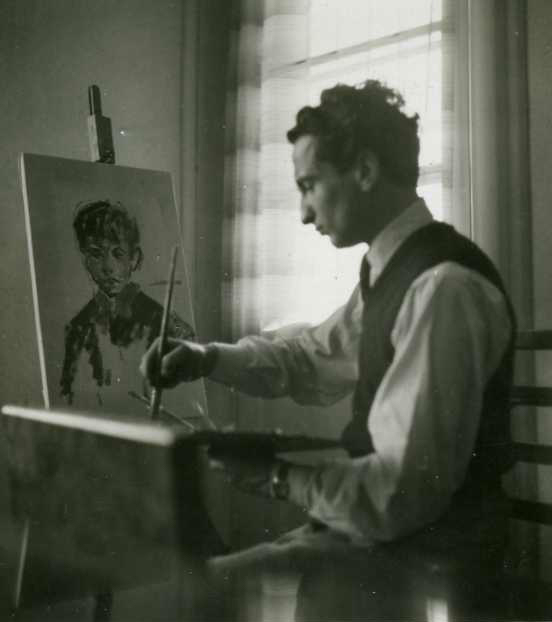Over the years, Boni’s work has been especially focused on two different points: graphisculpture – name given in 1970 by the Milanese printer Alfonso Ciranna for the uniqueness of Boni’s engravings – and painting, one feeding the other.
Paolo Boni was born in 1925 in Vicchio di Mugello in Tuscany, near Florence, a village where were also born Giotto and Fra Angelico. Up until the end of the first world war in 1945, Boni worked in the Galileo optics factory in Florence. After barely surviving a bombing, he made the decision to dedicate himself entirely to painting, joining the ‘Liceo Artistico’ in Florence.
In 1949, his work was exhibited in several personal art shows.
In 1954, he decided with his wife, American photographer Cuchi White, to move to Paris. There, he became good friends with painter Gino Severini, who wrote the text accompanying his first Parisian personal exhibition.
In 1957, in parallel with his pictorial work, Boni created his first engravings, obtained from
matrices of various stratified metals.
In 1961, upon his return from New York where the Brooklyn Museum, the Public Library and the Museum of Modern Art bought some of Boni’s engravings, he started working on a series of bas-reliefs made of wooden structures covered with copper, zinc, and stainless steel. He also began creating marble sculptures and bas-reliefs.
In 1965, an important personal exhibition took place at the Grimaldi Museum in Antibes (current Picasso Museum) in which were exhibited oil paintings, sculptures, bas-reliefs and engravings that demonstrated the variety of Boni’s work.
In 1969, he was profoundly shaken by humanity’s first steps on the moon and by the conquest of space. The widening of humanity’s possibilities and simultaneous first commercialisation of acrylic paints allowed Boni to completely revamp the themes of his work, which up until then had been focused on landscapes. He introduced targets, planes, arrows and incredible imaginary flying objects in colourful and surreal spaces.
Over the years, Boni’s work has been especially focused on two points: graphisculpture – name given in 1970 by the Milanese printer Alfonso Ciranna for the uniqueness of Boni’s engravings – and painting, one feeding the other.
From 1978, he regularly took part in large international art fairs such as the Fiac or the Saga, and had many personal exhibitions in Europe and in the United States. His work can today be found in thirty-eight museums around the world.
Paolo Boni created artist’s books with contemporary writers such as Michel Butor, Maurice Roche and Georges Perec, with whom he became good friends. He illustrated these books with his graphisculptures.
Around 1990, Boni diversified his practice by working with wood and refreshing his approach to graphisculptures. He cut, assembled, and painted plywood, in which he gave life to strange and moving human figures.

Paolo Boni, early 1950s @Cuchi White

Paolo Boni, late 1970s @Cuchi White

Paolo Boni working on a large bas-relief for the Régie Renault, Vallauris workshop, summer of 1968 @Cuchi White
